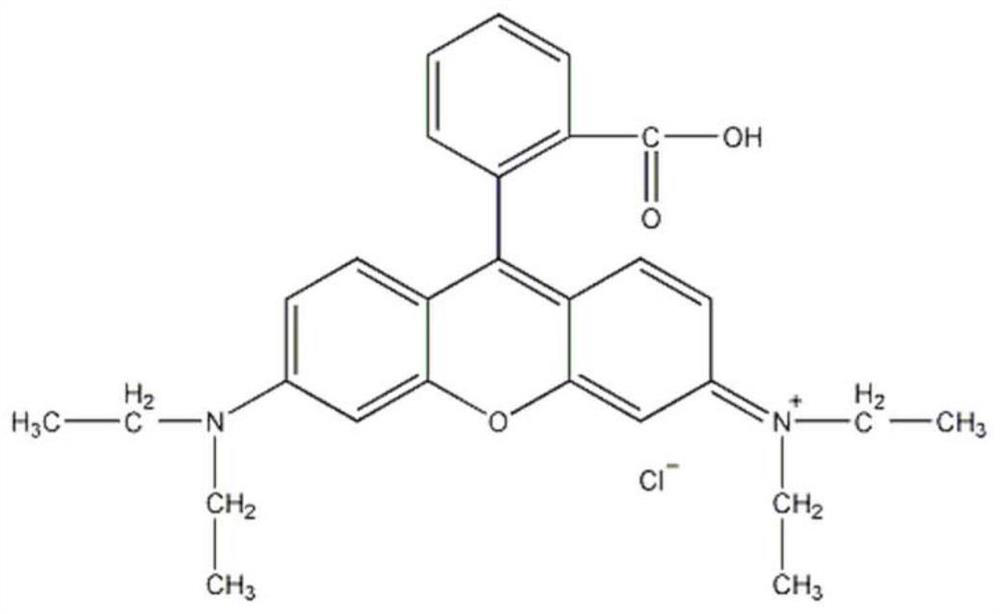A method for measuring the difference in internal energy of monovalent positive ions obtained by electrospray ionization and electrospray extraction ionization
An electrospray ionization and electrospray technology, which is applied in the fields of analytical chemistry and mass spectrometry, can solve the problems of not calculating the internal energy difference of different ion sources, lack of parent ion selection, enrichment process, extension of fragmentation time scale, etc. Simple, short timescale, accurate results
- Summary
- Abstract
- Description
- Claims
- Application Information
AI Technical Summary
Problems solved by technology
Method used
Image
Examples
Embodiment 1
[0076] The EESI-MS and ESI-MS device platforms were respectively set up, and rhodamine B was analyzed by tandem mass spectrometry by adjusting the energy of CID. The parent ion mass-to-charge ratio formed in positive ion mode was m / z 443, and the rhodamine B EESI-MS 2 Graph and ESI-MS 2 picture. image 3 (a) is the EESI-MS of Rhodamine B 2 Figure, when the collision energy is 30%, the parent ion m / z 443 mainly loses C respectively 2 h 4 、C 2 h 6 and CO 2 Neutral molecule, producing fragment ions at m / z 415, m / z 413 and m / z 399. Under the same collision energy conditions, ESI-MS 2 Rhodamine B was tested and the results were as follows image 3 As shown in (b), m / z 415, m / z 413 and m / z 399 fragment ions are also available, these fragment ions are compatible with EESI-MS 2 The results are consistent. However, compared to image 3 (a) and image 3 (b) It can be found that in ESI-MS, the relative abundance of fragment ions is significantly higher than that in EESI-MS, ...
Embodiment 2
[0083] Taking the fragment ion m / z 415 as an example, the method of the present invention is used to calculate the internal energy difference of the two ion sources. Image 6 Under the condition of low collision energy (1%~22%), ESI-MS 2 and EESI-MS 2 Trend diagram of the absolute intensity of the middle fragment ion m / z 415 peak. in ESI-MS 2 Medium, slowly increasing ESI-MS 2 The collision energy in %, the parent ion begins to form fragment ions, and the intensity of the fragment ion m / z 415 is In EESI-MS 2 In , the peak intensity of the fragment ion m / z 415 is to be Corresponding collision energy It can be known from formula (3) that the difference between the collision energies in the tandem mass spectrometers of the two is:
[0084] Combining with formula (4), it can be known that 13% of the collision energy is the internal energy difference between the two ion sources. The difference in internal energy of monovalent positive ions obtained by the two ionizat...
Embodiment 3
[0087] Taking the fragment ion m / z 399 as an example, the method of the present invention is used to calculate the internal energy difference of the two ion sources. Figure 7 Under the condition of low collision energy (1%~22%), ESI-MS 2 and EESI-MS 2 Trend diagram of the absolute intensity of the middle fragment ion m / z 399 peak. in ESI-MS 2 , when the collision energy is , the parent ion begins to form fragment ions, and the intensity of the fragment ion m / z 399 is In EESI-MS 2 In , the peak intensity of the fragment ion m / z 399 is to be Corresponding collision energy It can be known from formula (3) that the difference between the collision energies in the tandem mass spectrometers of the two is:
[0088]
[0089] Combining with formula (4), it can be known that 13% of the collision energy is the internal energy difference between the two ion sources. From the formula (6) can get:
[0090] ΔE ion =(NCE 2 -NCE 1 )×(isolation center)×(charge factor)÷500=(1...
PUM
 Login to View More
Login to View More Abstract
Description
Claims
Application Information
 Login to View More
Login to View More - R&D
- Intellectual Property
- Life Sciences
- Materials
- Tech Scout
- Unparalleled Data Quality
- Higher Quality Content
- 60% Fewer Hallucinations
Browse by: Latest US Patents, China's latest patents, Technical Efficacy Thesaurus, Application Domain, Technology Topic, Popular Technical Reports.
© 2025 PatSnap. All rights reserved.Legal|Privacy policy|Modern Slavery Act Transparency Statement|Sitemap|About US| Contact US: help@patsnap.com



